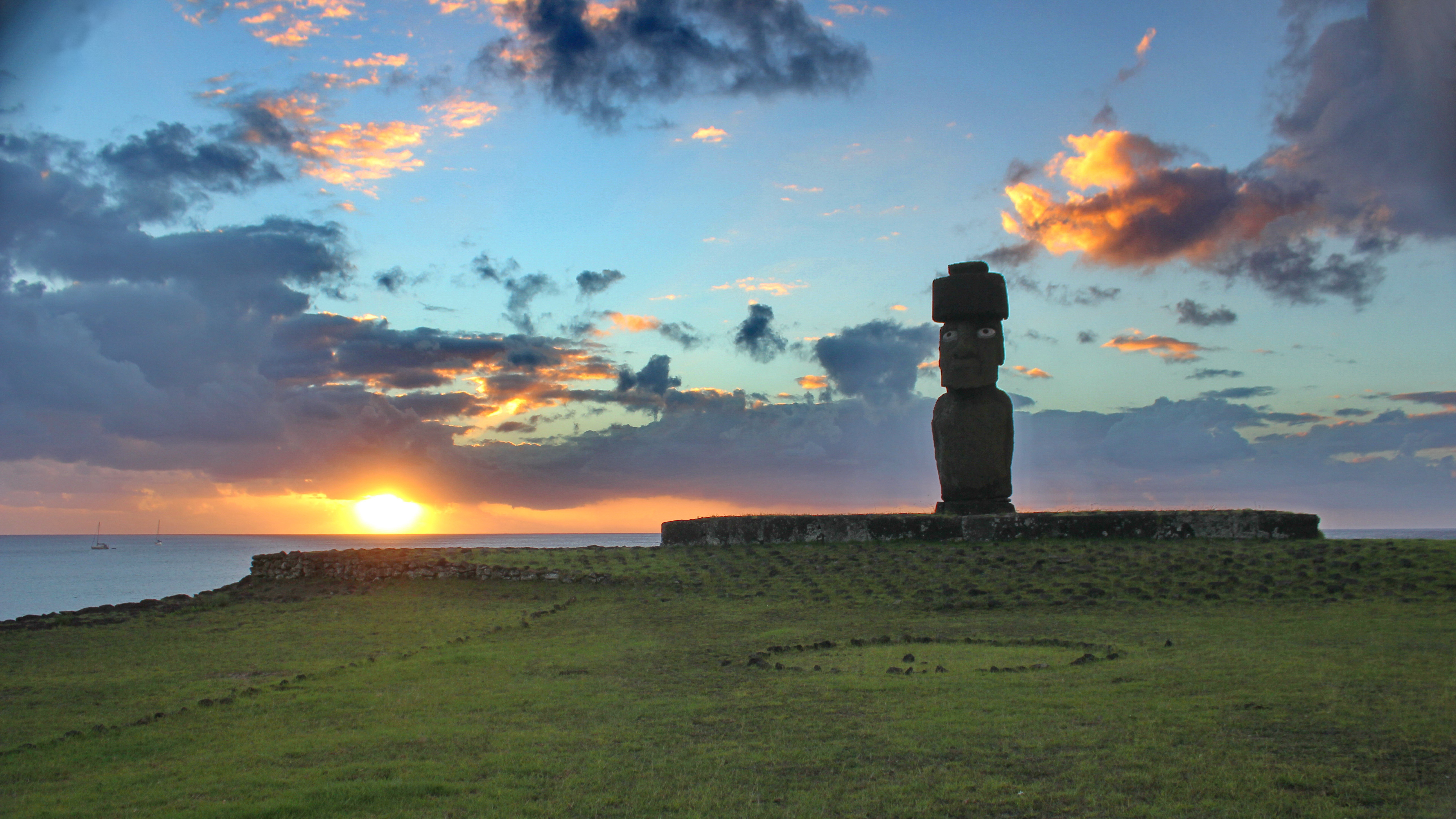Fulfilling a promise in my first post of this series, this bit takes up the well-known “heads”—more accurately, statues—of Easter Island. Properly called moai, they are the iconic images of the island, recognized my almost everyone, but generally without context.
The moai were indeed made as nearly full statues, complete with torsos but no legs. Nearly 1,000 examples are known on the 164 square-kilometer island. The famous images everyone recognizes of the “heads” are the better-preserved and more photogenic examples that remained upright in the quarry where they were produced. These were buried by scree and soil to various levels and present an eerie scene. Some 397 moai remain in the Rano Raraku quarry where almost all moai were carved. The map below shows the concentration of known moai in and around the quarry.

Moai were made for display on large megalithic platforms called ahu.1 Ahu were constructed for ritual/ceremonial use and are similar to religious platforms on other Polynesian islands, the most familiar examples being the heiau of Hawai’i. Easter Island is literally ringed by over 300 ahu along its rocky coast, about half of those once featuring moai.

Today, a number of ahu are restored with their toppled moai re-erected. Modern cranes were used for the restorations, which naturally begs the question of how the prehistoric period Rapanui (natives of the island) managed to do it. Thus we have one of the so-called “mysteries” of Easter Island. Another is how they were moved (as much as 9 miles). More on these things later, but . . . << SPOILER ALERT >> . . . it was not Ancient Aliens!

While the focus for observers is naturally the moai, the ahu themselves were impressive undertakings involving moving hundreds of tons of volcanic rock. Many “image ahu” (the ones with moai) featured “wings” extending the platform area significantly beyond the statues (perhaps for rituals displaced by the moai?).

One more quick fact: the moai are often erroneously said to be looking out to sea. In fact, on coastal ahu they always look inland; embodying the mana (divine power) of deceased chiefs as sentinels over the adjacent settlements. One of the most photographed ahu and moai is at Tahai, on the edge of Hanga Roa, the lone town on Rapa Nui:

Are those eyes and a headdress? In a future installment, we’ll look at details and embellishments of moai . . . , but next in Part 3: how were they made?
Thanks for looking! ![]()
[Updated 2 July 2018: better map!]


6 thoughts on “The Talking Heads of Rapa Nui, part 2: Easter Island Moai and Ahu”